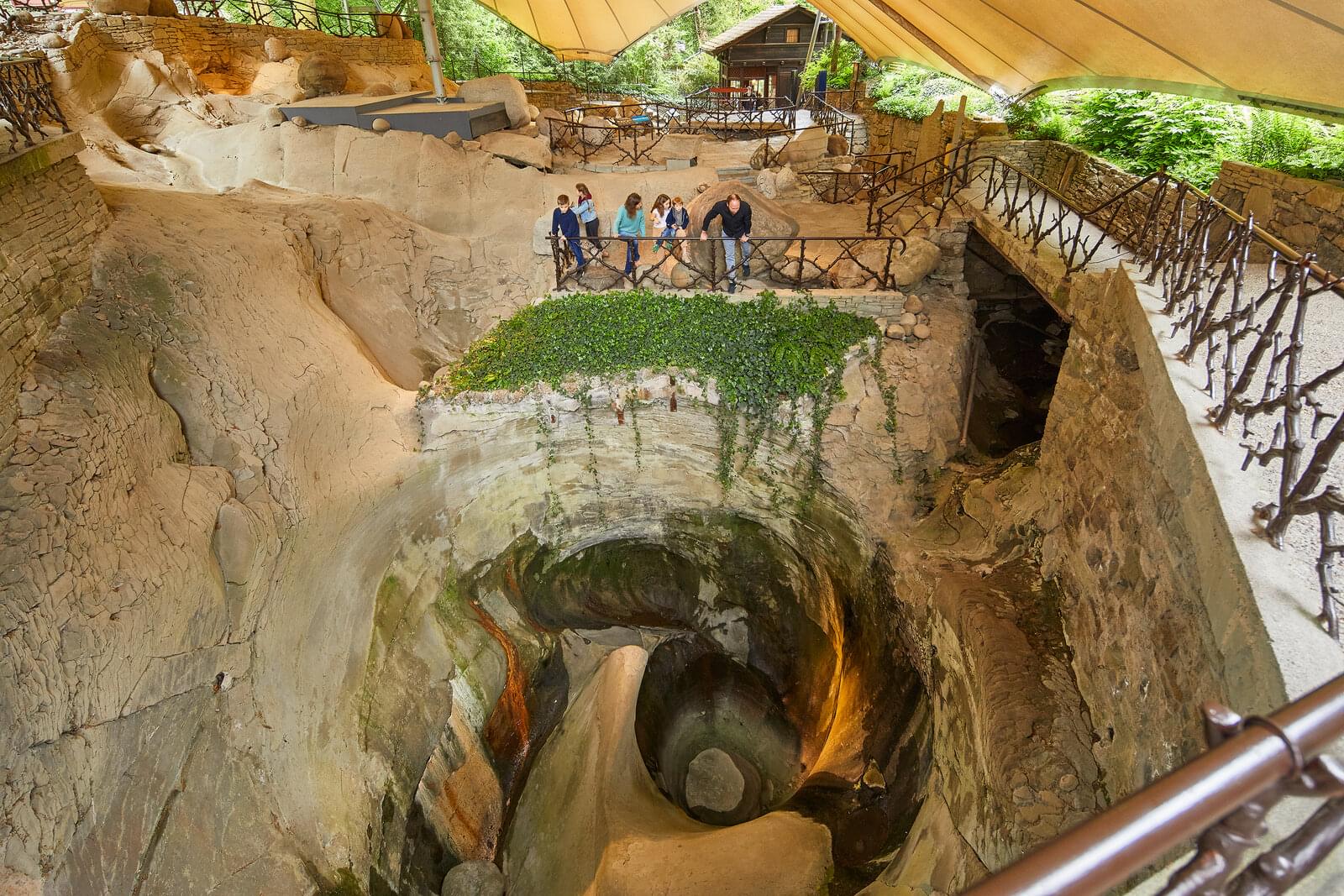The area of today's Glacier Garden is dominated by a rocky mogul. As the Reuss Glacier moved across it during the last Ice Age, the typical characteristics of a so-called "roche moutonée" were left behind: glacial polish, glacial striation, crescentic gouging, deep potholes and glacial boulders bear witness to the time when Lucerne lay under around 800 meters of ice.
HOW ARE GLACIER POTHOLES FORMED?
The potholes were formed at the bottom of the glacier by the sheer force of the melt water, which carried sand and gravel. It seeped through fissures to the bottom of the glacier. As the flow of water gathered speed, vortices of up to 200 km/h began to form. Within a few years, or perhaps even in one single summer, potholes were eroded. The largest glacier pothole in the Glacier Garden is 9.5 meters deep, with a diameter of 8 meters.
EROSION OF THE SANDSTONE
The slow-moving flow of the glacier over thousands of years abraded and polished the sandstone bedrock. The erosion, the furrows and the striations are the witnesses.
WHERE DO THE BOULDERS COME FROM?
These stones either fell onto the glacier surface in the Alps or were scooped up from the ground by the ice and transported further down the valley. The boulders provide evidence that the alpine foothills were once almost entirely covered by glaciers. The large, light-colored granite boulder from the Gotthard region weighs around 5 tons.
